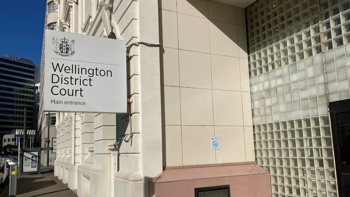
House insurance premiums jumped by more than 30 per cent in a year in some parts of New Zealand, price monitoring data provided to Treasury shows.
The same data reveals that, while insurance is still widely available, some home insurers appear to have withdrawn online quotes for entire regions.
A climate change researcher specialising in disaster economics says the data is a taste of what could come as the risk of climate change-driven natural hazards, especially flooding, increases.
Actuarial consultancy Finity has monitored insurance premiums since late 2022 for a dataset of 2000 properties throughout New Zealand, chosen to match the country’s natural hazards profile - including earthquake, flooding and tsunami risk.
The addresses are real but other information, such as property age, sum insured and construction materials, has been randomised so that the ‘houses’ in the dataset are not real people’s homes.
The data, provided to Treasury and government ministers every three months and released to RNZ under the Official Information Act, showed that insurance remained widely available in all regions between September 2022 and July 2023.
However, premiums have been steadily increasing since Finity first began price monitoring.
The average cheapest quote across the main dataset of 1400 houses, chosen to reflect earthquake risk across the country, rose 22.6 per cent, from $1423 to $1744.
The two most recent quarterly reports, including one from January this year, were withheld from RNZ as they have not been shared with Cabinet ministers yet.
The most expensive regions tallied with the highest earthquake risk - still considered New Zealand’s biggest natural hazard risk despite recent severe weather events.
However, some of those regions - including all parts of Wellington - only had small percentage increases to premiums, after the previous government increased the amount EQC will pay out on claims to $300,000 in October 2022.
As well as monitoring price, Finity also reported on how many of four major underwriters in New Zealand - AA Insurance, IAG, Tower and Vero - would provide insurance quotes online, as a way of measuring insurance availability.
More than 80 per cent of properties in the main dataset could get online quotes from three or more underwriters.
However, choice was more limited for the 303 properties in Wellington and the Hutt Valley: none were able to get an online quote from more than two of the underwriters.
Just 7 per cent of Marlborough homes in the dataset were able to get a third quote.
A small proportion of homes in central Wellington, Hutt Valley, Marlborough and Canterbury could not even get two quotes online.
Houses in some towns with high flood risk, such as Westport, were also less likely to be able to access multiple online quotes, along with houses in areas with high tsunami risk.
The data did not report which companies rejected online quotes, or if the same companies were rejecting the same properties.
Victoria University’s chair of economics of disasters and climate change, Professor Ilan Noy, said the jump in premiums was “very significant.
“It doesn’t look like a spike, because you have a rolling over of contracts… You see it slowly, within a 12-month period, emerging.”
The third-party risk modelling used by insurers was improving and some insurers were now pricing at individual property level - meaning some people would be noticing even bigger increases than the data suggested, Noy said.
“The increase in the average is obscuring the fact that there’s more differentiation between different types of properties in different locations, and even within the same sort of region.”
The “more worrying” signal from the data was that some properties were already struggling to automatically get insurance, Noy said.
“You clearly see some evidence that some locations are not giving quotes [online].
 Ilan Noy says the rate of premium increases and the lack of online availability in some regions both concern him.
Ilan Noy says the rate of premium increases and the lack of online availability in some regions both concern him.
“In some locations they’re saying, no, we need to look more carefully - we’re worried about this, we need to have some human look at this before we approve.”
Insurance might still be available, “but it definitely means that they’re more cautious about offering contracts for those properties”.
In the short term that meant less choice - and possibly higher premiums - for those homeowners.
The long-term outlook was more concerning.
“It’s almost an inevitable outcome that once some insurers start retreating, especially in a market where there are not that many players, then eventually all of them will.”
‘Unusual’ increases caused by cost pressures
Outgoing Insurance Council chief executive Tim Grafton, whose tenure ends this week, was more circumspect about availability, saying the Finity data only represented some insurers.
Of those insurers, many might be prepared to insure a property once they had spoken to a customer on the phone and gathered more details, Grafton said.
The size of recent premium increases was “unusual”, he said.
Part of that was due to construction inflation, which had pushed up rebuild costs by about 30 per cent over the last two years.
The Finity data included a 17.5 per cent increase to the total sum insured for each property to reflect that.
The other major factor was a jump in costs for reinsurance - essentially, insurance for insurers in the event of a major natural disaster.
That had increased by 25 to 40 per cent for many insurers in the last year as a response to multiple severe weather events around the world, including Cyclone Gabrielle and the Auckland Anniversary floods, Grafton said.
A home on Shaw Rd in Eskdale following the aftermath of Cyclone Gabrielle.. Photo / Warren Buckland
“Some reinsurers have made it quite clear that they’ve been somewhat surprised by the number that have occurred, and the severity of those events, globally.”
Finity Principal Simon Young said prior to last year, a severe weather event in New Zealand that cost insurers more than $300 million was “inconceivable”.
“And suddenly you have two billion-dollar events that are not earthquakes.”
“Reinsurance costs have skyrocketed - and the way that we allocate that reinsurance to customers has changed as well to reflect that [risk].”
It was not in anyone’s interests for the cost of insurance to keep increasing at that rate and he did not expect the same increases this year.
“But it’s definitely going in one direction only, and you’re going to have a greater degree of the cost falling on those that have the highest probability of making a claim.”
Young said he was “not worried about availability on the whole.
“It’s just harder for people to get insurance in those [higher risk] regions - they’ve got to jump through a few more hoops.”
There was no wholesale shift to refuse coverage in any areas yet, Young said.
“I would anticipate over the very long term - that 30 to 50-year period - we will see areas that the insurance industry as a whole might decide are just uninsurable. But that’s not going to be the bulk of New Zealand - they’ll be very small areas.”
Ilan Noy believed insurers would rather quietly retreat from a very high-risk area than continue to hike premiums.
“Sometimes it’s better for them reputationally just to say, ‘sorry, we can’t insure you anymore’.”
Political vacuum
Noy, Grafton and Young all said that, ultimately, insurance availability would require a political solution - starting by ensuring that development did not continue in high-risk areas.
Grafton hoped work on a National Policy Statement on Natural Hazard Decision-Making - which began under the previous government and would give councils greater direction to prevent such developments - would continue.
“It is really important that we do have a risk framework for decisions around where we consent for new building in the future.”
Noy believed there was currently little political appetite for coming up with a solution to rising insurance costs - and the wider question of what to do about communities already in high-risk areas.
“There’s a problem here: if it’s becoming difficult for you to insure your house, you don’t necessarily want to be very vocal about it. So the media doesn’t know, and so there’s no reporting and [therefore] there’s no political problem.”
However, he was not in favour of “heavy regulation” of insurance, saying it created perverse incentives for people to remain in hazardous locations even after a disaster.
Tim Grafton said natural hazard risk and insurance availability were not issues he believed many people put a lot of thought into when buying a home at the moment.
“There’s a huge amount of emotion invested in purchasing a home, and once you’ve secured that, you’re looking first at, can I afford it and does the location work for me… When you’ve done all of that, it’s not like the insurance is high on your list - it’s just something I need to get to get my mortgage.”
Some people purchased a Land Information Memorandum (LIM) but they added several hundred dollars to the cost of due diligence, he said.
There was a growing bulk of natural hazards information that should be much more freely available to current and prospective homeowners, Grafton said.
“If that becomes really easy for people to do, then I think you will start having people engage in thinking very carefully about the properties that they buy.”
Simon Young said climate change risk should be on house buyers’ minds.
“I would deifnitely be looking at sea level rise as a factor in my assessment, and landslip is another factor I’d be careful about.”
-Kate Newton, RNZ
Take your Radio, Podcasts and Music with you









